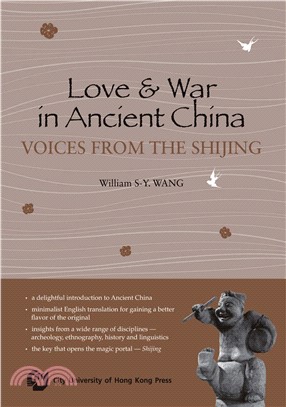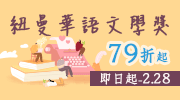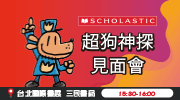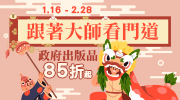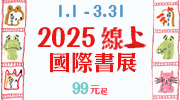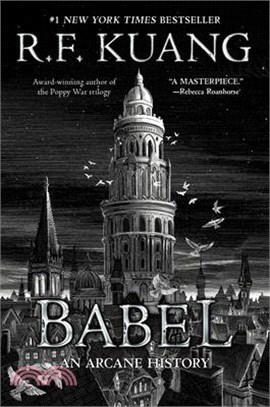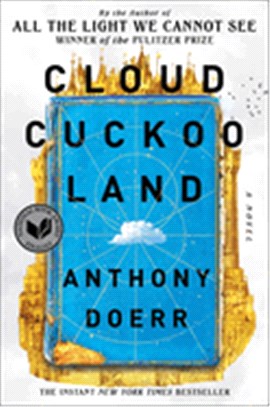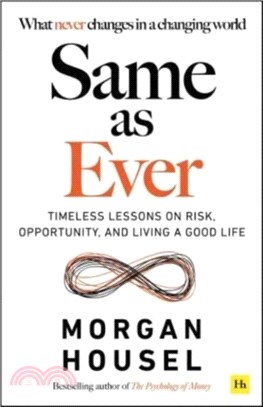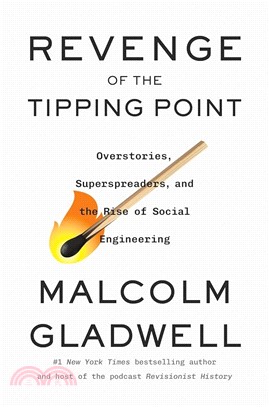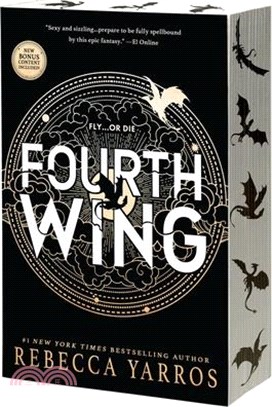Love and War in Ancient China:Voices from the Shijing(電子書)
商品資訊
ISBN:9789629372156
出版社:CityUniversityofHongKongPress
作者:William S–Y. WANG
出版日:2013/04/01
裝訂:電子書
版次:1版
商品碼:2222220494454
商品簡介
More than any other treasure, Shijing 詩經 contains the historical roots of China, from which much of modern culture grew. From a lovelorn young man to an aging woman spurned by her wedded husband, from an elder statesman admonishing a young sovereign, to foot-soldiers facing the unspeakable fate of sacrificial burial, the love and war in Shijing serves as a key to unlock the cultural roots of Ancient China.
The book presents the reader with a fascinating glimpse of the peoples of Ancient China by analyzing many poems in Shijing and discussing aspects of culture and events reflected in the poems from a wide range of disciplines, including archeology, ethnography, history and linguistics.
Reading this book will enhance the general reader’s knowledge of Chinese culture as well as familiarity with the language as a “bare-bone”. Minimalist English translation is used which enables readers to get closer to and gain a better sense and flavor of the original text.
作者簡介
目次
Introduction
Part 1
Chapter 1 A Magic Portal
Chapter 2 Battle of Muye
Chapter 3 Two Warriors: Fuhao and Shaohu
Chapter 4 Structure of the Shijing
Part 2
Chapter 5 Legacy of the Shijing
Chapter 6 Love in the Shijing: Guan Ju
Chapter 7 Love Requited and Unrequited
Chapter 8 Injustice in Death
Chapter 9 Femmes Fatales and Miracle Births
Chapter 10 Affairs of State: Praise, Complaint, and Admonishment
Chapter 11 Across Time and Cultures
書摘/試閱
By all accounts, the Chinese civilization is one of the great achievements of humanity, with numerous contributions to the arts and sciences over several millennia. However, a century and half ago, with foreign gun boats pointed at her cities and opium sapping her strength, China was falling to the edge of total disintegration. Yet miraculously, having weathered the worst ravages a civilization can endure over many dark decades, the Chinese people have risen again, from an abyss of humiliation, and are still rising. In looking at these people, one cannot but wonder who they were, where they came from, and what their cultural roots were. What were the Ancient Chinese like?
These were the thoughts that led me to write this book. I am not formally trained in all of the diverse topics discussed here, but have learned them only as an amateur in sporadic fashion, prompted by a sense of curiosity, and an abiding love for my native heritage. The subjects are so intrinsically interesting that I am eager to share them, in spite of how little I know. The joy I derive from telling the story here is not unlike that radiating from the face of the man with a drum in Figure 1 (p. 4).
I have tried to make these pages accessible to the general public, with no special expertise required, not even any training in the Chinese language. Chinese writing, what I call “sinograms” here, is put in footnotes at the bottom of each page so as not to intimidate readers not familiar with it. Putonghua and Hanyu Pinyin, as well as Sinogram traditional and simplified, are discussed in the Introduction. At the same time, however, I have supplied an extensive set of endnotes in the end of each chapter, presented at a more specialized level. Readers who wish to explore any of the topics covered here more deeply will find these endnotes helpful.
Several friends much more expert than I were gracious enough to look at earlier drafts of these pages, and offered valuable advice. These include Matthew Chen陳淵泉of the University of California at San Diego, Ho Dah’an 何大安 of Academia Sinica, Geoffrey Sampson 散復生 of the University of South Africa, Sun Jingtao 孫景濤of the Hong Kong University of Science and Technology, and Takashima Kenichi 高嶋謙一of the University of British Columbia. The suggestions from David Buckley卜大偉of the Oregon Health and Science University are invaluable for providing the viewpoint
of a reader from another field. Edmund Chan陳家揚of the City University of Hong Kong Press has been an unfailing source of editorial support, as he has been for several other books I have been involved with. Finally, I am particularly fortunate to have much expert advice from Ed Shaughnessy 夏含夷 of the University of Chicago during the final stage of the manuscript, saving me from many embarrassing errors. I regret that it was too late in the book production to follow all his wise counsel.
Above all, to Tsai Yaching 蔡雅菁 I owe not only the initial inspiration for this labor of love to explore our common heritage, but also the day-to-day intellectual and practical support over the many long months to see the project through. Many of the insights and observations gathered here actually came from her. All in all, one could not ask for a better muse!
Despite much help I have received from them, and from many other generous friends, surely there are numerous inadequacies which remain. I can only hope that kind readers will point these out to me so that I can continue to learn.
There is a Chinese saying, pao zhuan yin yu拋磚引玉, literally “throw brick attract jade.” It comes from a story in the Tang dynasty, in which someone tried to induce a famous poet to compose by starting a poem with some of his own lines. His wish came true when the famous poet came and added several more talented lines to polish off the poem. In publishing this little book, I am hoping that readers who are much more knowledgeable than I will continue to explore the wonderful world of Ancient China, and share their explorations with us.
主題書展
更多書展今日66折
您曾經瀏覽過的商品
購物須知
為了保護您的權益,「三民網路書店」提供會員七日商品鑑賞期(收到商品為起始日)。
若要辦理退貨,請在商品鑑賞期內寄回,且商品必須是全新狀態與完整包裝(商品、附件、發票、隨貨贈品等)否則恕不接受退貨。



